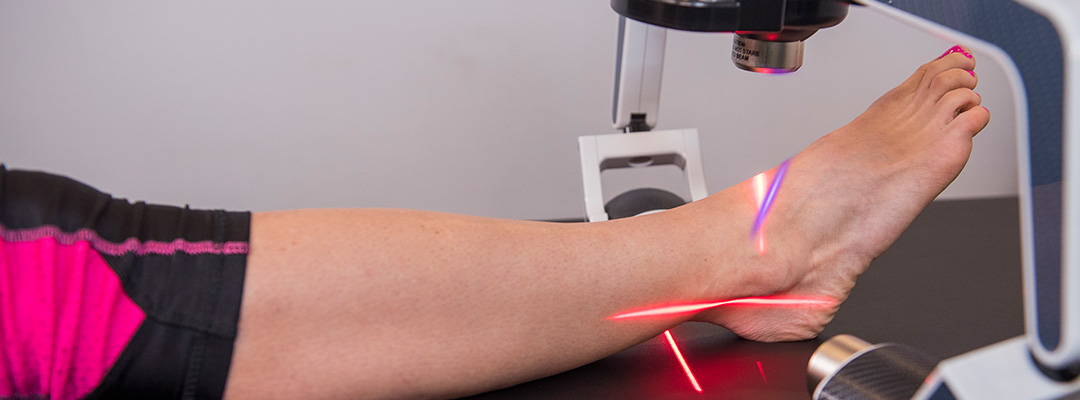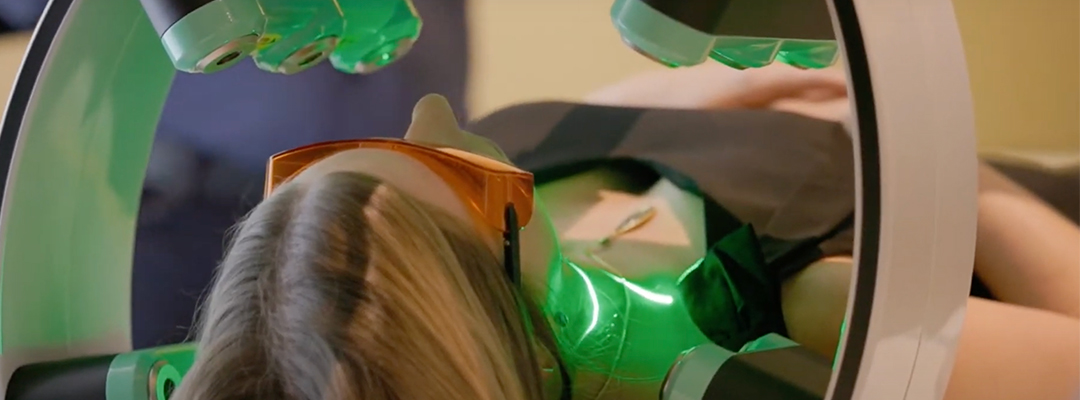Chiropractic care has long been recognized as an effective, non-invasive approach to treating musculoskeletal issues, particularly those related to the spine. As patient demand for holistic, non-invasive treatments continues to grow, chiropractors are constantly seeking new ways to enhance their practice and provide more comprehensive care. One such method gaining traction in chiropractic clinics is Low-Level Laser Therapy (LLLT).
By integrating LLLT into chiropractic treatments, practitioners can reduce pain, speed up recovery times, and offer a broader range of solutions for patients suffering from various conditions. In this blog, we’ll explore the benefits and techniques of incorporating LLLT into chiropractic care and discuss how it can enhance patient outcomes.
Benefits of Integrating LLLT into Chiropractic Treatments
Pain Reduction
One of the primary goals of chiropractic care is to alleviate pain, and LLLT is an excellent complement to this objective. Many patients who visit chiropractors suffer from inflammation, whether it’s from an acute injury, chronic condition, or muscle strain. LLLT can significantly reduce inflammation by targeting the affected tissues with specific wavelengths of light that penetrate deep into the skin, modulating nerve function and calming irritated areas.
For patients with chronic back pain, neck pain, or joint discomfort, LLLT provides an additional layer of relief, reducing the need for pain medications and offering a non-invasive alternative to more aggressive treatments. Combined with chiropractic adjustments, the use of LLLT allows for a comprehensive approach to pain management that targets both the structural and cellular causes of pain.
Accelerated Recovery
LLLT is particularly effective in helping patients recover from injuries faster. By promoting cellular repair and boosting circulation to the affected areas, LLLT accelerates tissue healing, making it ideal for patients who have sustained musculoskeletal injuries, such as sprains, strains, or joint damage. The light therapy stimulates the production of ATP (adenosine triphosphate) within cells, which enhances the body’s natural healing processes.
For chiropractors, this means that patients can experience faster recovery times, allowing them to return to normal activities sooner. This benefit is especially useful in sports injury rehabilitation, where athletes need to recover quickly and fully to maintain peak performance. LLLT can be incorporated into recovery protocols to reduce downtime and promote more efficient healing.
Enhanced Patient Outcomes
Patients increasingly expect more than just symptom relief—they are looking for long-term solutions that improve their quality of life. LLLT, when integrated into chiropractic care, can help achieve better overall outcomes for patients. Whether it’s reducing chronic pain, aiding recovery from injury, or enhancing mobility, the addition of LLLT ensures that patients receive well-rounded care that addresses their immediate pain concerns while also promoting long-term healing.
Patients who experience positive outcomes are more likely to remain loyal to their chiropractor, recommend services to others, and maintain consistent treatment plans. By offering LLLT, chiropractors can differentiate their practice and provide a more comprehensive service that improves patient satisfaction and overall wellness.
Common Conditions Treated with LLLT in Chiropractic Practices
Musculoskeletal Pain
Chiropractors frequently treat patients suffering from musculoskeletal pain, including muscle strains, joint pain, and spine-related issues. LLLT can be particularly effective in alleviating these conditions by reducing inflammation and pain while promoting tissue regeneration. Patients with lower back pain, neck pain, and tension in the shoulders and upper back can benefit from the combined effects of chiropractic adjustments and LLLT.
For instance, in patients with conditions like whiplash or disc herniations, LLLT may be used to reduce inflammation and improve tissue recovery while chiropractic adjustments help to realign the spine and reduce mechanical stress on the affected area.
Nerve and Soft Tissue Injuries
Many patients visit chiropractors to address nerve-related pain, such as sciatica, or soft tissue injuries, like tendonitis. LLLT has shown promise in treating these conditions by modulating nerve function and promoting the repair of damaged tissues. Sciatica patients, for example, often experience significant pain relief when LLLT is applied to the lower back and legs to target irritated nerves.
Similarly, soft tissue injuries involving tendons and ligaments can benefit from LLLT’s ability to stimulate collagen production and reduce scar tissue formation, enhancing mobility and reducing the risk of long-term damage.
Chronic Conditions
Chronic conditions like arthritis or fibromyalgia are often a challenge to manage due to their persistent nature. LLLT provides an additional tool for chiropractors to offer relief from the chronic pain and inflammation associated with these conditions. Patients with arthritis, for example, often find that regular LLLT treatments help to reduce joint inflammation and stiffness, making it easier to engage in physical activities and improve their overall quality of life.
Fibromyalgia patients, who frequently suffer from widespread pain and fatigue, can also benefit from LLLT’s ability to reduce pain sensitivity and improve tissue health, complementing chiropractic treatments that focus on realigning the spine and reducing muscular tension.
Techniques for Integrating LLLT into Chiropractic Practices
Combining LLLT with Adjustments
One of the most effective ways to integrate LLLT into chiropractic care is by combining it with traditional spinal adjustments. After an adjustment, applying LLLT to the affected areas can help reduce inflammation and speed up recovery, allowing patients to experience relief more quickly. For patients with chronic or acute pain, this combination of treatments addresses both the mechanical issues of alignment and the cellular aspects of healing.
For example, a patient presenting with lower back pain due to misalignment may receive an adjustment to correct spinal posture, followed by LLLT to reduce inflammation in the surrounding tissues. This approach can enhance the effectiveness of the adjustment and provide longer-lasting pain relief.
Standalone LLLT Sessions
In some cases, LLLT can be offered as a standalone treatment for patients who may not be ready or able to undergo spinal adjustments. Patients with acute pain, such as muscle spasms or inflammation, may benefit from LLLT treatments before progressing to more hands-on chiropractic care. This allows the patient’s pain to be managed initially while preparing the body for future adjustments.
LLLT sessions can also be scheduled between chiropractic visits to maintain the benefits of treatment and manage any flare-ups in pain or discomfort. This flexibility allows chiropractors to offer a variety of treatment options depending on the patient’s needs and preferences.
Customizing LLLT Protocols
As with any chiropractic treatment, it’s important to tailor LLLT protocols to meet the unique needs of each patient. Treatment protocols should be based on factors such as the patient’s condition, pain level, and overall health goals. By customizing LLLT sessions, chiropractors can ensure that patients receive the most effective treatment for their specific situation.
For example, patients with chronic conditions may require more frequent treatments to manage their symptoms, while patients recovering from an acute injury might benefit from a shorter course of treatments aimed at promoting faster healing. Flexibility in treatment planning allows chiropractors to optimize outcomes for each individual patient.
Best Practices for Chiropractors Using LLLT
Selecting the Right Equipment
Choosing the appropriate LLLT device is critical for ensuring successful outcomes. LLLT devices vary in wavelength, power, and design, so it’s essential for chiropractors to select equipment that meets the specific needs of their practice. Devices should be easy to use, reliable, and capable of delivering the appropriate intensity for different patient conditions. Chiropractors should also look for devices that are FDA-approved to ensure safety and effectiveness.
Patient Education
Educating patients about the benefits of LLLT is key to building trust and ensuring treatment success. Chiropractors should explain how LLLT complements adjustments and other treatments, as well as its ability to reduce pain, enhance recovery, and improve long-term wellness. Patients who understand the benefits of LLLT are more likely to be compliant with their treatment plans and experience better outcomes.
Conclusion
Integrating Low-Level Laser Therapy into chiropractic practices offers a range of benefits, from reducing pain and speeding up recovery to enhancing patient outcomes. By combining LLLT with traditional chiropractic techniques, practitioners can offer a more comprehensive and holistic approach to patient care. As more patients seek non-invasive treatments that promote long-term wellness, LLLT provides chiropractors with an innovative tool to meet these demands and improve overall patient satisfaction.




